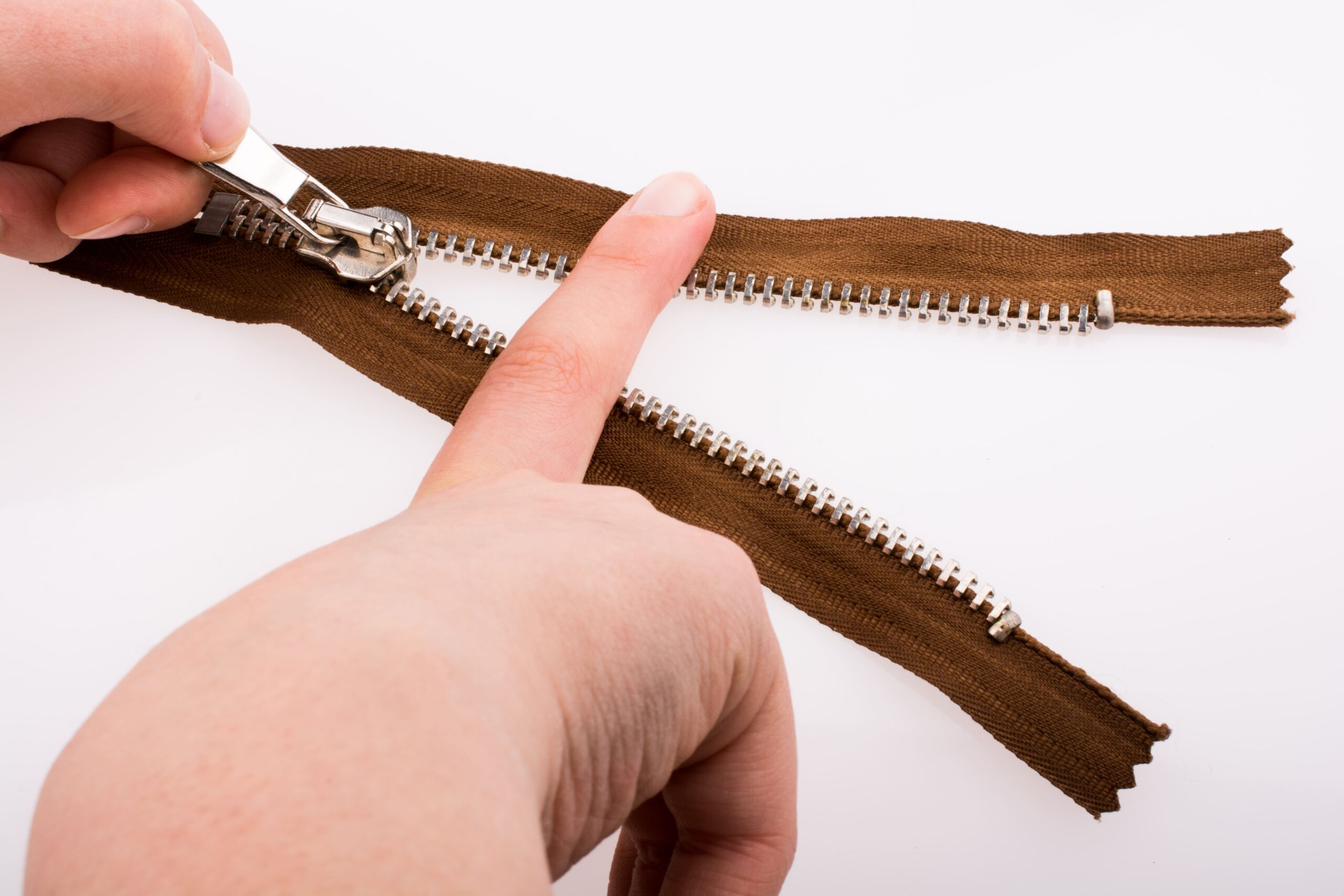Zippers may appear simple, but in OEM product design, they are precision-engineered mechanical systems that can determine whether a product succeeds or fails in the field. When zippers fail, they almost never fail randomly — they fail because of overlooked details in the design stage.
From gauge mismatch to incorrect material pairing, even minor errors can cause catastrophic results once a product hits production. Whether you’re designing marine enclosures, industrial gear, or protective clothing, understanding the most common zipper design mistakes can prevent delays, warranty claims, and costly rework.
As a U.S. manufacturer with more than seventy years of zipper engineering experience, LenZip has helped OEMs refine their designs to achieve the perfect balance between performance, cost, and reliability. This guide outlines the most frequent zipper design errors, explains why they happen, and offers proven strategies to prevent them.
Mistake 1: Choosing the Wrong Gauge for the Application
The most common design issue comes down to size. A zipper’s gauge, which measures the width of the closed chain in millimeters, determines its tensile strength and load capacity. When a smaller gauge is used in a heavy-duty product — such as a #5 zipper on a tent or industrial curtain — the chain can separate under stress.
Gauge also affects slider fit, flexibility, and seam integration. Lighter gauges work well for garments and soft goods, while larger gauges are needed for rigid materials and high-tension environments. The correct match ensures the zipper remains functional and smooth over time.
LenZip’s Zipper Gauge & Chain Size Chart provides exact dimensional data for every gauge type, helping OEM engineers select the proper scale before committing to tooling or prototype runs.
Mistake 2: Mismatching Materials Between Chain, Tape, and Fabric
A zipper’s components — chain, tape, slider, and stops — must work in harmony. Using incompatible materials is a subtle but serious error that often leads to premature failure.
For example, nylon coil chains are flexible but may not adhere properly to coated PVC fabrics used in marine or industrial covers. Similarly, metal chains paired with polyester tapes can corrode or discolor if the coatings are not properly aligned.
Selecting materials that share similar mechanical and thermal properties is critical. LenZip’s Zipper Materials & Finishes catalog outlines each available polymer and metal finish, along with its ideal environmental use case — from UV-resistant polyester for outdoor use to chemically stable polypropylene for laboratory and containment gear.
Matching material performance ensures even stress distribution and prevents cracking, delamination, or uneven wear during the zipper’s life cycle.

Mistake 3: Ignoring Coating Compatibility in Sealed Systems
When zippers are integrated into coated or laminated fabrics — such as those found in marine covers, medical textiles, or inflatables — coating compatibility becomes a primary engineering concern.
Many designers mistakenly assume that any polyurethane-coated zipper will bond to any polyurethane fabric. In reality, slight variations in coating density, molecular weight, or additive chemistry can cause weak adhesion or thermal distortion during RF welding or heat sealing.
LenZip provides detailed coating specifications through its Zipper Coatings & Finishes program, allowing OEMs to choose coatings that fuse predictably with TPU, PVC, or PU-based textiles. Testing samples in controlled environments is always recommended before mass production begins.
Ignoring coating compatibility can lead to leaks, seam failure, or aesthetic imperfections that appear only after shipment — costly issues that are easily preventable through early material alignment.
Mistake 4: Overlooking Environmental Stress Factors
Temperature, UV radiation, and chemical exposure can all alter zipper performance. Selecting the correct materials and finishes for the intended operating environment ensures long-term reliability.
For outdoor or marine products, polyester and polypropylene tapes outperform nylon because they resist stretching and UV degradation. Coatings like Teflon® or plasma-bonded films add further protection against salt, corrosion, and mildew. For high-temperature environments such as protective gear or industrial insulation, metal zippers with heat-resistant sliders are preferred.
LenZip tests each of its products under ASTM B117 corrosion and ISO 4892 weathering standards. By simulating years of UV exposure, these tests confirm which combinations of chain and coating will maintain performance in extreme climates.
Neglecting environmental stress testing may not cause immediate failure, but it will shorten the lifespan of the finished product — something no OEM wants customers to discover first.
Mistake 5: Underestimating the Role of Testing and Validation
Zipper failures often trace back to an absence of proper testing data. OEMs may assume that if a component “looks strong,” it will perform well — but visual inspection cannot replace tensile and fatigue analysis.
ASTM D2061 remains the industry standard for measuring zipper tensile strength, crosswise load, and slider durability. LenZip’s Inside Zipper Testing and Zipper Load Testing Explained resources outline how every zipper undergoes cycle, load, and corrosion testing before approval.
In the development phase, OEMs should test complete assemblies — not just isolated zippers. This means evaluating how the zipper performs when sewn or welded into the intended fabric, under the exact environmental conditions the final product will face.
Validating through data ensures predictable results, compliance with procurement standards, and confidence that every closure will hold up to real-world stress.
Mistake 6: Ignoring Manufacturing Workflow Constraints
Even the most well-designed zipper can fail if it’s not compatible with the manufacturing process. Some OEMs choose zippers that meet performance requirements but prove difficult to integrate due to tooling limitations, seam geometry, or handling constraints on the production floor.
For instance, if a zipper tape is too thick for a specific sewing foot or welding platen, it may cause distortion during assembly. Similarly, selecting an oversized gauge may introduce bulk that interferes with fabric rolling or pattern cutting.
LenZip’s engineering team assists OEMs by reviewing CAD files and workflow parameters before production begins. By collaborating early, manufacturers can identify potential issues such as tool clearance, bend radius, or temperature compatibility — avoiding costly redesigns midstream.
Considering manufacturing workflow at the design stage not only improves assembly efficiency but also preserves the integrity of the zipper system after installation.
Mistake 7: Over-Specifying Beyond Actual Needs
While under-specifying a zipper can cause failure, over-specifying can be just as wasteful. Choosing the largest or most expensive option for a light-duty application increases cost and complexity unnecessarily.
A #10 molded zipper designed for heavy industrial curtains may be far stronger than a lightweight protective bag requires. Overbuilt components also add stiffness, weight, and manufacturing difficulty without providing meaningful performance gains.
The ideal approach is to match zipper gauge, coating, and finish precisely to the application’s true mechanical demands. LenZip’s Choosing the Right Zipper resource helps OEMs define performance criteria such as tensile load, cycle count, and environmental exposure — ensuring a balanced design that performs efficiently without overspending on materials.
Mistake 8: Neglecting Long-Term Maintenance and User Environment
Even a perfectly designed zipper can fail prematurely if it isn’t suited to how end users will handle and maintain the product. Zippers exposed to sand, salt, or oil require coatings and sliders that resist buildup and corrosion. Heavy-duty outdoor gear benefits from self-cleaning coil chains, while marine and industrial zippers often need periodic lubrication.
Neglecting to plan for maintenance or include cleaning recommendations in product documentation can shorten lifespan and erode brand reputation. LenZip’s Zipper Maintenance & Care guidelines offer OEMs and end users practical maintenance standards for each zipper type and environment.
When maintenance is considered part of the design — not an afterthought — zipper reliability extends dramatically over time.

Design Optimization with LenZip Engineering Support
Each of these mistakes underscores a larger truth: successful zipper integration is an engineering process, not an accessory choice. Every dimension, coating, and slider geometry affects function and longevity.
LenZip’s team of U.S.-based engineers collaborates directly with OEMs during development to optimize specifications and manufacturing alignment. From CAD modeling to custom testing, every zipper is validated against the real demands of its intended use.
This partnership-based approach ensures that once a product reaches the market, its closures perform exactly as intended — no surprises, no failures, and no unnecessary cost overruns.
For OEMs seeking to refine or prototype complex assemblies, LenZip also provides cut-to-length custom zippers and small-batch production, helping teams move quickly from concept to validation.
Learn More
Zipper design mistakes are preventable, but only when engineers treat zippers as integral performance components. Proper gauge selection, material compatibility, and testing validation create the foundation for reliable, field-tested products.
LenZip, one of America’s most experienced custom zipper manufacturers, combines domestic production, ISO-certified testing, and collaborative engineering to help OEMs eliminate uncertainty. Whether you’re designing for marine, industrial, or protective applications, LenZip delivers the expertise and transparency needed to avoid design pitfalls from the start.
Request an engineering consultation or design review today through LenZip’s Request a Quote form.
Frequently Asked Questions
- What’s the most common reason zippers fail in OEM products?
Most failures occur when gauge size or material choice doesn’t match the application’s load or environment. Proper sizing and ASTM testing eliminate this risk.
- How can I ensure my zipper will hold up under long-term use?
Choose materials tested under ASTM D2061 and ISO 4892, and validate performance within the actual product assembly. LenZip performs these tests on every production batch through its Inside Zipper Testing program.
- Are imported zippers less reliable?
Reliability depends on consistency and testing transparency. Domestic producers like LenZip maintain traceability and ASTM/ISO documentation for every run. Learn more in LenZip vs YKK.
- Can LenZip assist with design validation before production?
Yes. LenZip offers engineering support, CAD review, and prototype testing for OEMs at any development stage. Visit Request a Quote to begin.
- What’s the best way to prevent corrosion or slider sticking in marine environments?
Use polyester or polypropylene tape with PU or Teflon® coatings and perform regular maintenance per LenZip’s Zipper Maintenance & Care guide.
